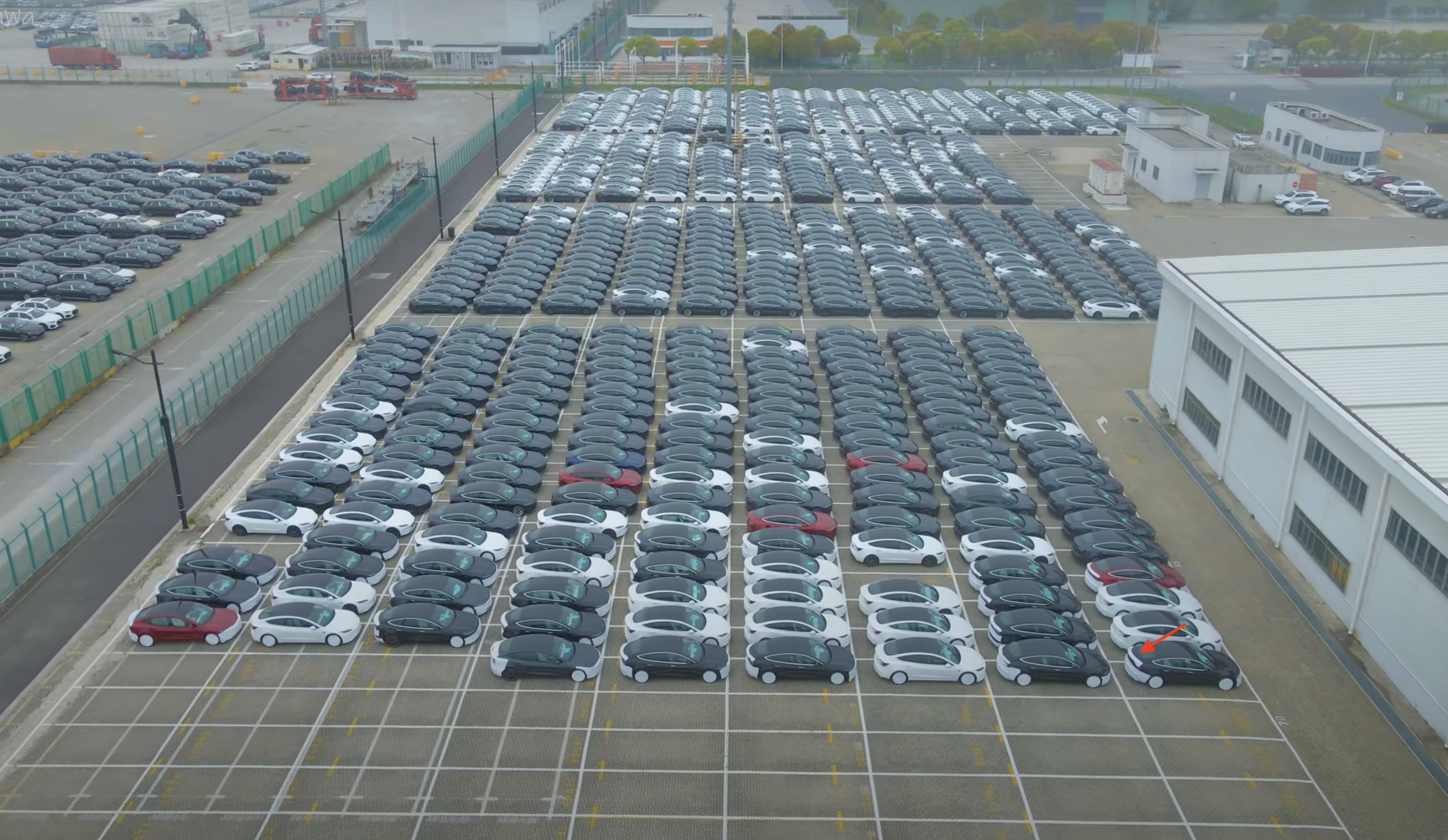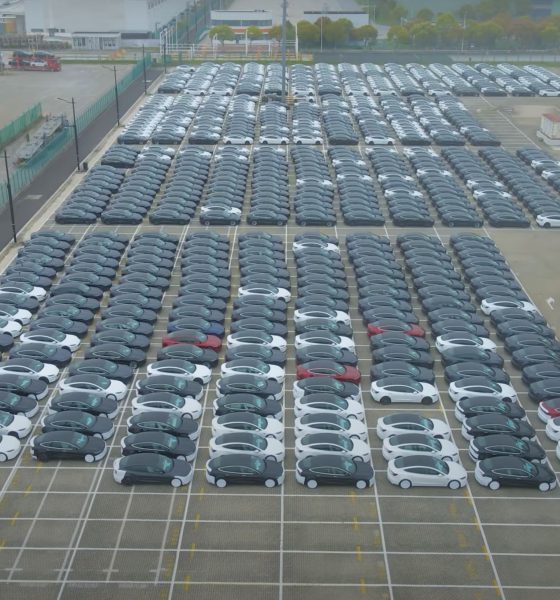Amidst a major auto industry shift to electric vehicles (EVs) and software-driven mobility, a new survey shows that almost all drivers want to have ownership over their own vehicle data—though consumer awareness on data privacy and ownership are still lacking.
As part of a survey of over 1,300 adults who lease or own vehicles that they drive at least once a week, car insurance app Jerry reported last month that 96 percent of respondents said they should be able to own any data generated by their vehicles. Similarly, 78 percent of those surveyed reported that they were either uncomfortable or extremely uncomfortable with having their data collected by automakers already.
You can see a few insights from the survey below, or check out the full report here.
Credit: Jerry Credit: Jerry Credit: Jerry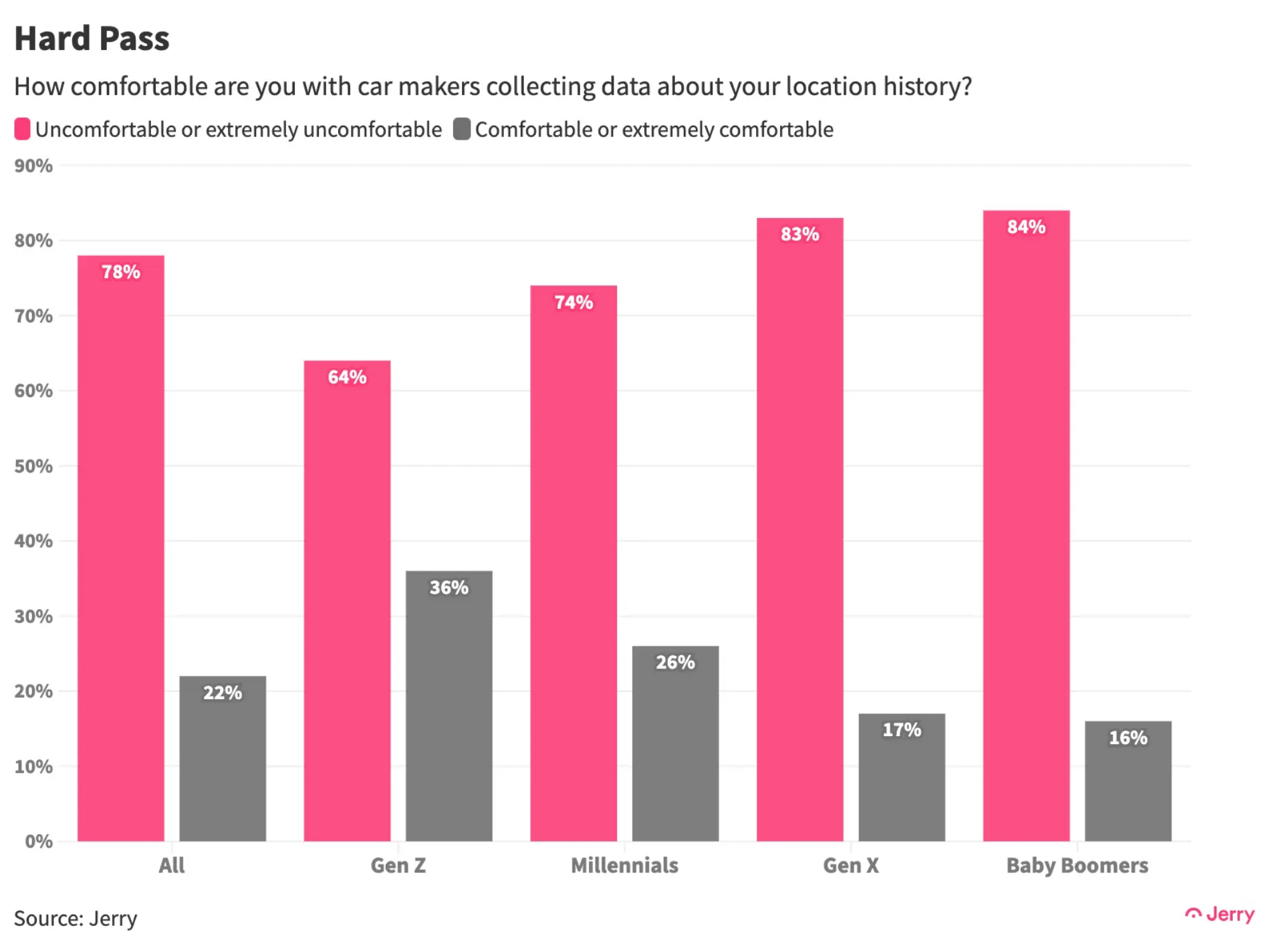
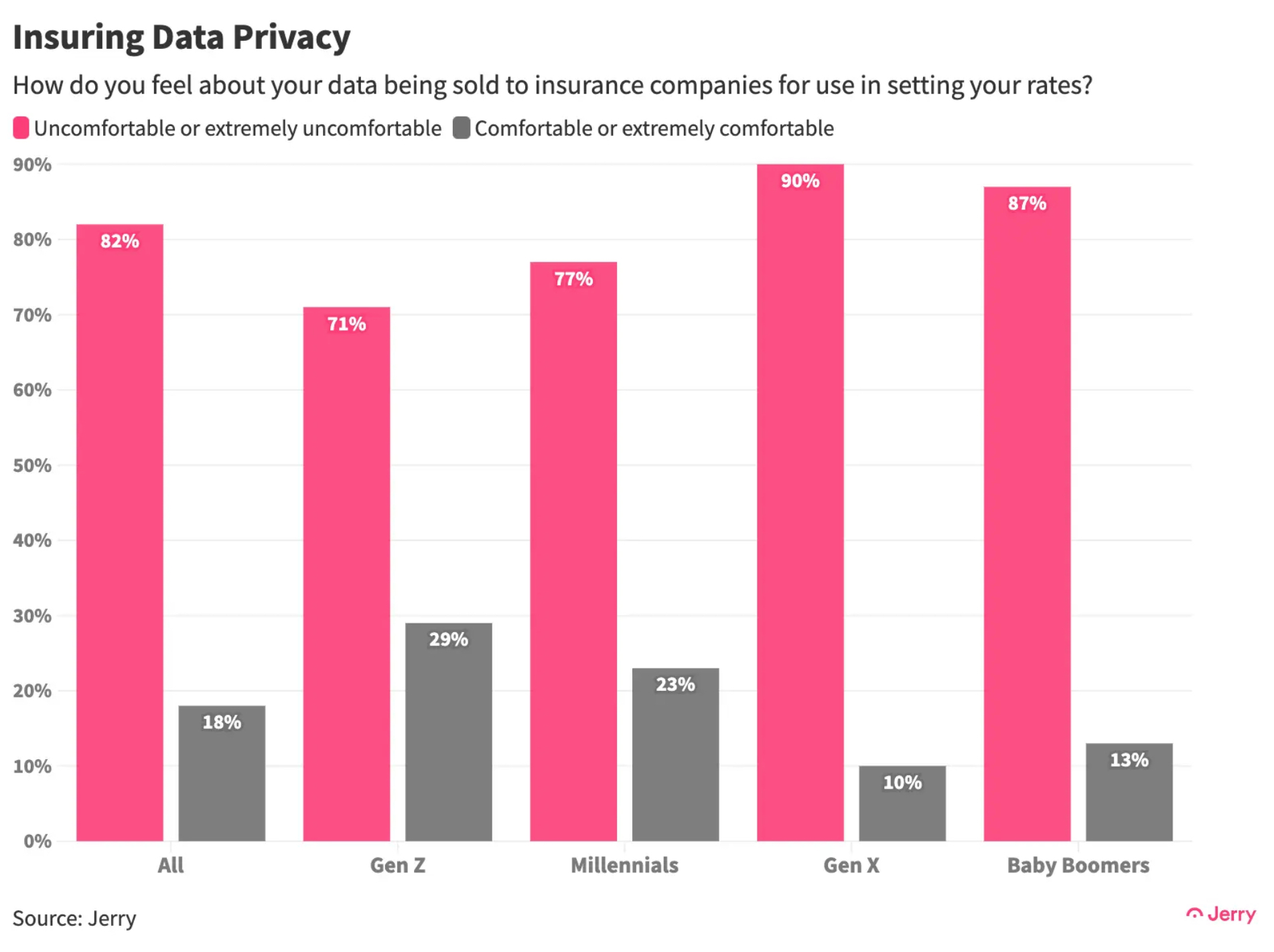
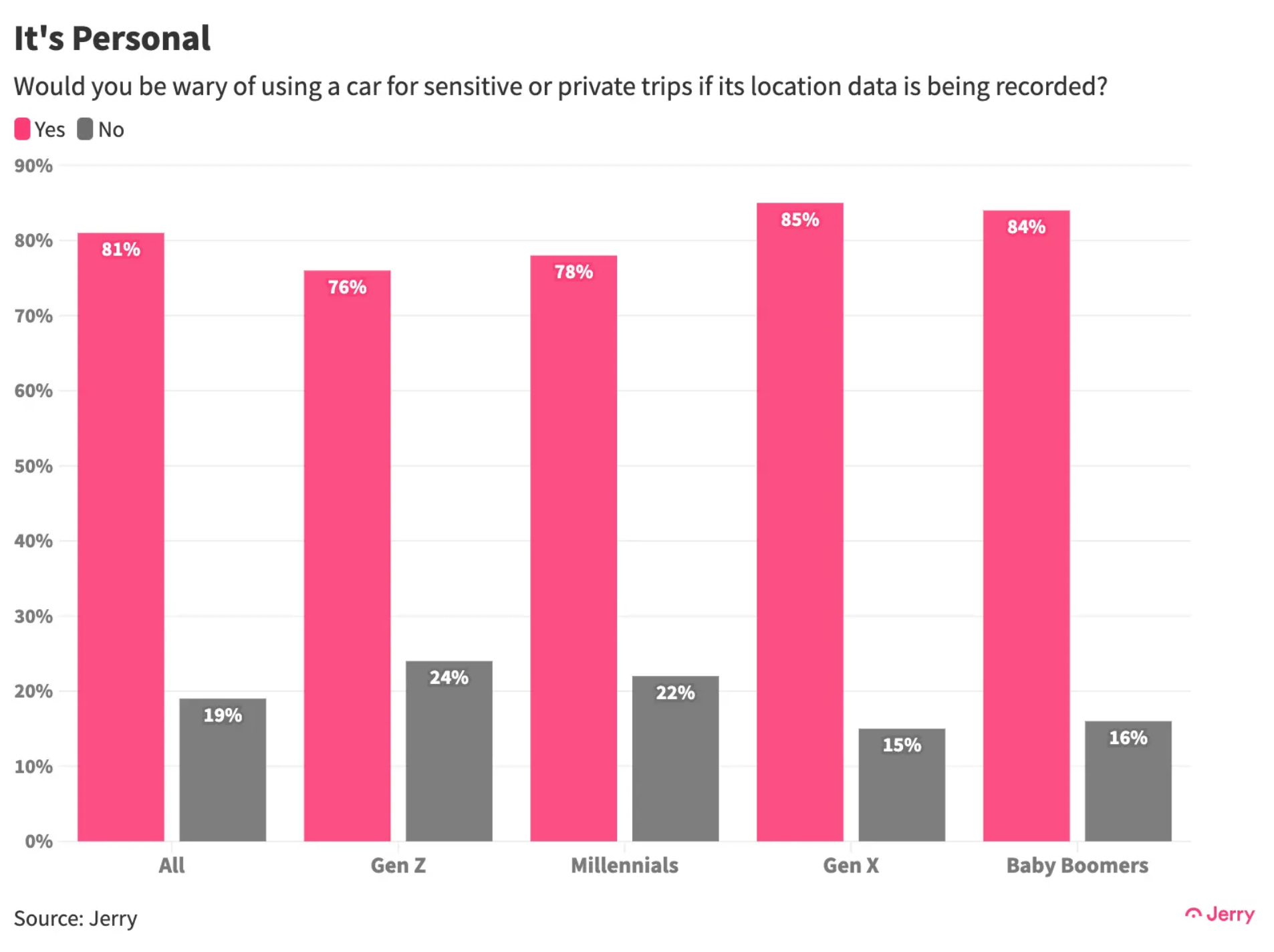
“People were nearly unanimous” in “thinking that they should own the data that is generated by their cars,” said Henry Hoenig, Jerry data journalist, in a statement to Automotive News.
The results come as many companies plan to use vehicle data as a consistent revenue stream, including manufacturers, insurance providers, and data brokers. On the consumer side, many may not be fully aware of how their vehicles are being connected to the internet, nor how their data is being used.
Data Collection in Modern Cars and Consumer Awareness
Teslarati spoke with Andy Chatham, co-founder of the connected vehicle platform Digital Infrastructure for Moving Objects (DIMO), about vehicle data ownership and privacy. He notes that modern cars include substantial amounts of data collection, such as Tesla’s 360-degree camera view around the cars as just one example. However, he also says that consumers are less likely to be aware of their vehicles’ data collection practices than they are with their cell phones.
“Generally, your vehicle is the most expensive or the second most expensive asset that you own, and traditionally people are very aware that their phones and their computers are connected to the internet,” Chatham said. “But especially with modern cars, it’s not always obvious that the car is also connected to the internet.”
Chatham says that most automakers aren’t generally following best practices surrounding cybersecurity, noting that many let third-party sub-contractors make those decisions for them, alongside other companies in the supply chain.
“Generally, [automakers are] not following best practices when it comes to how the vehicles are networked and how cybersecurity practices are implemented,” Chatham adds.
“I see a pretty big transition from the world of buying a phone and understanding that this is a device that has a lot of data collection going on, and buying a car and maybe acknowledging that once at the beginning, but never really understanding what that actually means.”
Chatham also says companies should open up their APIs for other developers to create applications using that data, and let vehicle owners access their own vehicle data and toggle permissions directly from their cars—not unlike what Tesla is currently doing.
However, even Tesla’s approach to vehicle data may leave a few things to be desired, and the company is one of many automakers to have faced legal action over the matter. Still, the DIMO co-founder estimates that Tesla is roughly three to five years ahead of the industry, perhaps except for Rivian.
Chatham also notes that as applications for car data improve more and more, and perhaps even offer certain data monetization options for consumers, owners will become more aware of vehicle connectedness. Still, the transition to this new public paradigm could be tricky for both consumers and developers.
“In order for that to even exist in the first place, there’s a chicken and egg problem, because developers don’t want to go cut separate deals with 10 different OEMs and get them to like agree to certain terms and use different APIs. They just won’t,” Chatham adds. “They just want to build to one thing, which is what they’re used to with both. It’s honestly a big enough pain in the ass to get developers to build an iOS and Android app and deal with two separate terms of service.”
“In the car world, Toyota is the biggest automaker and they’re, what, like 15 percent of cars? So it’s not the same dynamic, and then choice is the biggest thing that allows people to protect their own privacy because a lot of consumers don’t care.”
Automakers and the Use of Vehicle Data
Earlier this year, General Motors (GM) reported ceasing a partnership with one data broker, after discovering that the company had been selling customer data to insurance companies without gaining their consent. Public backlash ensued, and affected consumers said they witnessed inexplicable increases for their monthly insurance premiums, which were ultimately traced back to the telemetry program that had shared their data.
Ford and Progressive Insurance were involved in a similar case that brought data ownership and privacy to light in 2022. Last year, Mozilla said that all 25 car companies it examined as part of a study on privacy collected more personal data than necessary, even calling them “privacy nightmares.”
Unlike some companies, Tesla doesn’t sell or rent consumer data to third-party companies, though it does collect driver information on a fleet scale for its own purposes, as the company explains on its website.
“We’re committed to protecting you anytime you get behind the wheel of a Tesla vehicle. That commitment extends to your data privacy,” Tesla writes on its web page dedicated to the topic of privacy. “Our privacy protections aim to go beyond industry standards, ensuring your personal data is never sold, tracked or shared without your permission or knowledge.”
Tesla Insurance data has driven changes to vehicle design: Elon Musk
What are your thoughts? Let me know at zach@teslarati.com, find me on X at @zacharyvisconti, or send us tips at tips@teslarati.com.

News
Tesla Cybercab tests are going on overdrive with production-ready units
Tesla is ramping its real-world tests of the Cybercab, with multiple sightings of the vehicle being reported across social media this week.

Tesla is ramping its real-world tests of the Cybercab, with multiple sightings of the autonomous two-seater being reported across social media this week. Based on videos of the vehicle that have been shared online, it appears that Cybercab tests are underway across multiple states.
Recent Cybercab sightings
Reports of Cybercab tests have ramped this week, with a vehicle that looked like a production-ready prototype being spotted at Apple’s Visitor Center in California. The vehicle in this sighting was interesting as it was equipped with a steering wheel. The vehicle also featured some changes to the design of its brake lights.
The Cybercab was also filmed testing at the Fremont factory’s test track, which also seemed to involve a vehicle that looked production-ready. This also seemed to be the case for a Cybercab that was spotted in Austin, Texas, which happened to be undergoing real-world tests. Overall, these sightings suggest that Cybercab testing is fully underway, and the vehicle is really moving towards production.
Production design all but finalized?
Recently, a near-production-ready Cybercab was showcased at Tesla’s Santana Row showroom in San Jose. The vehicle was equipped with frameless windows, dual windshield wipers, powered butterfly door struts, an extended front splitter, an updated lightbar, new wheel covers, and a license plate bracket. Interior updates include redesigned dash/door panels, refined seats with center cupholders, updated carpet, and what appeared to be improved legroom.
There seems to be a pretty good chance that the Cybercab’s design has been all but finalized, at least considering Elon Musk’s comments at the 2025 Annual Shareholder Meeting. During the event, Musk confirmed that the vehicle will enter production around April 2026, and its production targets will be quite ambitious.
News
Tesla gets a win in Sweden as union withdraws potentially “illegal” blockade
As per recent reports, the Vision union’s planned anti-Tesla action might have been illegal.

Swedish union Vision has withdrawn its sympathy blockade against Tesla’s planned service center and showroom in Kalmar. As per recent reports, the Vision union’s planned anti-Tesla action might have been illegal.
Vision’s decision to pull the blockade
Vision announced the blockade in early December, stating that it was targeting the administrative handling of Tesla’s facility permits in Kalmar municipality. The sympathy measure was expected to start Monday, but was formally withdrawn via documents sent to the Mediation Institute and Kalmar Municipality last week.
As noted in a Daggers Arbete report, plans for the strike were ultimately pulled after employer group SKR highlighted potential illegality under the Public Employment Act. Vision stressed its continued backing for the Swedish labor model, though Deputy negotiation manager Oskar Pettersson explained that the Vision union and IF Metall made the decision to cancel the planned strike together.
“We will not continue to challenge the regulations,” Petterson said. “The objection was of a technical nature. We made the assessment together with IF Metall that we were not in a position to challenge the legal assessment of whether we could take this particular action against Tesla. Therefore, we chose to revoke the notice itself.”
The SKR’s warning
Petterson also stated that SKR’s technical objection to the Vision union’s planned anti-Tesla strike framed the protest as an unauthorized act. “It was a legal assessment of the situation. Both for us and for IF Metall, it is important to be clear that we stand for the Swedish model. But we should not continue to challenge the regulations and risk getting judgments that lead nowhere in the application of the regulations,” he said.
Vision ultimately canceled its planned blockade against Tesla on December 9. With Vision’s withdrawal, few obstacles remain for Tesla’s long-planned Kalmar site. A foreign electrical firm completed work this fall, and Tesla’s Careers page currently lists a full-time service manager position based there, signaling an imminent opening.
News
Tesla Semi program Director teases major improvements

Tesla Semi Program Director Dan Priestly teased the major improvements to the all-electric Class 8 truck on Thursday night, following the company’s decision to overhaul the design earlier this year.
Priestley said he drove the Semi on Thursday, and the improvements appear to be welcomed by one of the minds behind the project. “Our customers are going to love it,” he concluded.
Just drove the redesigned Semi. Our customers are going to love it. https://t.co/KZ88sf1CDL
— Dan Priestley (@danWpriestley) December 19, 2025
The small detail does not seem like much, but it is coming from someone who has been involved in the development of the truck from A to Z. Priestley has been involved in the Semi program since November 2015 and has slowly worked his way through the ranks, and currently stands as the Director of the program.
Tesla Semi undergoes major redesign as dedicated factory preps for deliveries
Tesla made some major changes to the Semi design as it announced at the 2025 Annual Shareholder Meeting that it changed the look and design to welcome improvements in efficiency.
Initially, Tesla adopted the blade-like light bar for the Semi, similar to the one that is present on the Model Y Premium and the Cybertruck.
Additionally, there are some slight aesthetic changes to help with efficiency, including a redesigned bumper with improved aero channels, a smaller wraparound windshield, and a smoother roofline for better aero performance.
All of these changes came as the company’s Semi Factory, which is located on Gigafactory Nevada’s property, was finishing up construction in preparation for initial production phases, as Tesla is planning to ramp up manufacturing next year. CEO Elon Musk has said the Semi has attracted “ridiculous demand.”
The Semi has already gathered many large companies that have signed up to buy units, including Frito-Lay and PepsiCo., which have been helping Tesla test the vehicle in a pilot program to test range, efficiency, and other important metrics that will be a major selling point.
Tesla will be the Semi’s first user, though, and the truck will help solve some of the company’s logistics needs in the coming years.
